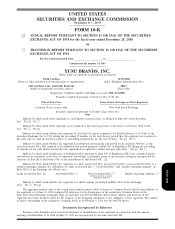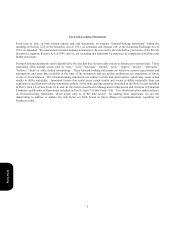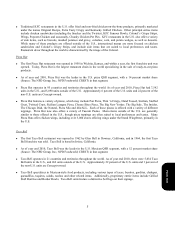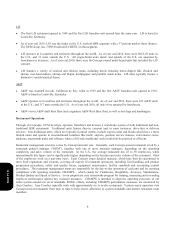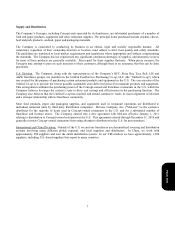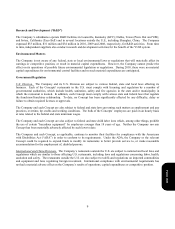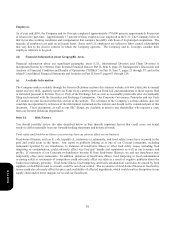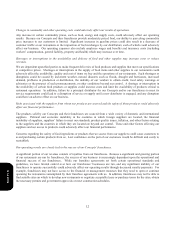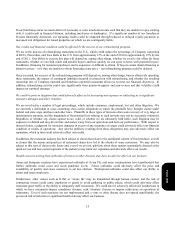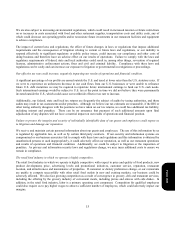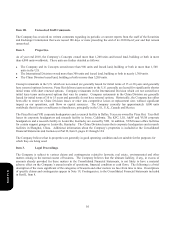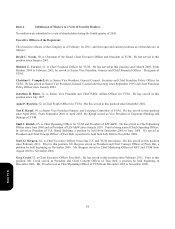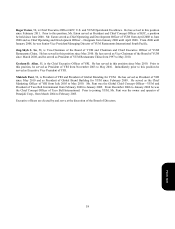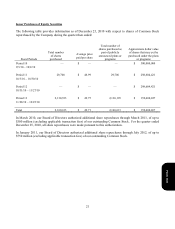Pizza Hut 2010 Annual Report Download - page 108
Download and view the complete annual report
Please find page 108 of the 2010 Pizza Hut annual report below. You can navigate through the pages in the report by either clicking on the pages listed below, or by using the keyword search tool below to find specific information within the annual report.
11
Our China operations subject us to risks that could negatively affect our business.
A significant and growing portion of our restaurants are located in China. As a result, our financial results are
increasingly dependent on our results in China, and our business is increasingly exposed to risks there. These risks
include changes in economic conditions (including wage and commodity inflation, consumer spending and unemployment
levels), tax rates and laws and consumer preferences, as well as changes in the regulatory environment and increased
competition. In addition, our results of operations in China and the value of our Chinese assets are affected by
fluctuations in currency exchange rates, which may adversely affect reported earnings. There can be no assurance as to
the future effect of any such changes on our results of operations, financial condition or cash flows.
In addition, any significant or prolonged deterioration in U.S.-China relations could adversely affect our China business.
Certain risks and uncertainties of doing business in China are solely within the control of the Chinese government, and
Chinese law regulates the scope of our foreign investments and business conducted within China. There are also
uncertainties regarding the interpretation and application of laws and regulations and the enforceability of intellectual
property and contract rights in China. If we were unable to enforce our intellectual property or contract rights in China,
our business would be adversely impacted.
Our other foreign operations subject us to risks that could negatively affect our business.
A significant portion of our Concepts’ restaurants are operated in foreign countries and territories outside of the U.S. and
China, and we intend to continue expansion of our international operations. As a result, our business is increasingly
exposed to risks inherent in foreign operations. These risks, which can vary substantially by market, include political
instability, corruption, social and ethnic unrest, changes in economic conditions (including wage and commodity inflation,
consumer spending and unemployment levels), the regulatory environment, tax rates and laws and consumer preferences
as well as changes in the laws and policies that govern foreign investment in countries where our restaurants are operated.
In addition, our results of operations and the value of our foreign assets are affected by fluctuations in foreign currency
exchange rates, which may adversely affect reported earnings. More specifically, an increase in the value of the United
States Dollar relative to other currencies, such as the Australian Dollar, the British Pound, the Canadian Dollar and the
Euro, could have an adverse effect on our reported earnings. There can be no assurance as to the future effect of any such
changes on our results of operations, financial condition or cash flows.
We may not attain our target development goals and aggressive development could cannibalize existing sales.
Our growth strategy depends in large part on our ability to increase our net restaurant count in markets outside the United
States, especially China. The successful development of new units will depend in large part on our ability and the ability
of our franchisees to open new restaurants and to operate these restaurants on a profitable basis. We cannot guarantee that
we, or our franchisees, will be able to achieve our expansion goals or that new restaurants will be operated profitably.
Further, there is no assurance that any new restaurant will produce operating results similar to those of our existing
restaurants. Other risks which could impact our ability to increase our net restaurant count include prevailing economic
conditions and our, or our franchisees’, ability to obtain suitable restaurant locations, obtain required permits and
approvals in a timely manner and hire and train qualified personnel.
Our franchisees also frequently depend upon financing from banks and other financial institutions in order to construct
and open new restaurants. If it becomes more difficult or expensive for our franchisees to obtain financing to develop
new restaurants, our planned growth could slow and our future revenue and cash flows could be adversely impacted.
In addition, the new restaurants could impact the sales of our existing restaurants nearby. It is not our intention to open
new restaurants that materially cannibalize the sales of our existing restaurants. However, as with most growing retail and
restaurant operations, there can be no assurance that sales cannibalization will not occur or become more significant in the
future as we increase our presence in existing markets over time.
Form 10-K


